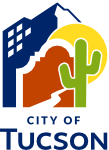Microfiche records prior to 2006 have not been completely digitized and may not be available yet on PRO. If you can not find what you are looking for please submit a records request.
Permit Review Detail
Review Status: Completed
Review Details: RESUBMITTAL
Permit Number - T05CM05714
Review Name: RESUBMITTAL
Review Status: Completed
| Review Date | Reviewer's Name | Type of Review | Description | Status | Comments |
|---|---|---|---|---|---|
| 03/03/2006 | ROBERT SHERRY | PLUMBING-COMMERCIAL | REVIEW | Denied | 1. Coordinate the provided plumbing plans and water isometrics. Reference Section 103.2.3, UPC 1994. 2. Revise the site drawing to show the locations of the cleanouts in the building sewer Reference Section 103.2.3, UPC 1994. 3. The Watts model 70A tempering valve, specified to reduce the temperature of the hot water to the lavatories to 110 degrees Fahrenheit, has a temperature range of 120 to 160 degrees Fahrenheit. 4. Show how the new water piping relates to the existing water supply system. Clarify keynote 6 on sheet P1.0. Reference Section 101.5.1, UPC 1994. 5. Revise the water pressure and water pipe sizing calculations to include the pressure drops associated with the reduced pressure backflow preventer assembly and the pressure regulator. (Note that the maximum size of the specified pressure regulator is only ½" and it cannot accommodate the calculated demand.) Reference Appendix A, UPC 1994. 6. According to keynote 6 on the 11/11/05 version of sheet M1.0, the two existing classrooms had gas furnaces on the roof. How are they being supplied with natural gas? Reference Section 103.2.3, UPC 1994. |
| 03/06/2006 | ROBERT SHERRY | MECHANICAL-COMMERCIAL | REVIEW | Denied | 1. Switching the restroom exhaust fan with a light switch when supply air is being introduced into the restroom can result in recirculation of the air from the restroom. Revise the design to eliminate the possibility of recirculation. Reference Section 403.2.1, IMC 2000. 2. Provide information on the specified Type I hood that shows the minimum exhaust flow and the maximum makeup airflow required to provide capture and containment of the exhaust effluent. Reference Sections 106.3.1 and 508.2, IMC 2000. Note: revise keynote 8, sheet A1.0 to coordinate with the Type I hood requirement. 3. Show that a separation of at least ten feet exists between ALL air intake openings and ALL exhaust openings. Reference Sections 401.5 and 506.3.13.3, IMC 2000. 4. Provide cleanouts in the grease exhaust duct. Reference Sections 506.3.9 and 506.3.10, IMC 2000. 5. Show that the installation of the hood complies with the clearance requirements of Sections 507.9 and 507.10, IMC 2000 (detail 1/M1.1 shows no clearances). 6. Show how the grease duct complies with Section 506.3.11, IMC 2000. 7. Show the vertical dimensions from the ceiling to the floor, cooking, surface, and to the bottom of the hood. Reference Sections 106.3.1, 507.11, and 507.12, IMC 2000. 8. Provide details showing the support of the grease duct. Reference Sections 506.3.4 and 506.506.3.7, IMC 2000. 9. Show how the grease duct and specified exhaust fan comply with Section 506.3.9, IMC 2000. 10. Show that the termination of the exhaust fan is not less than 40" above the roof surface. Reference Section 506.3.13.1, IMC 2000. 11. Show the termination of the drain for the evaporative cooler. Reference Section 106.3.1, IMC 2000. |
Final Status
| Task End Date | Reviewer's Name | Type of Review | Description |
|---|---|---|---|
| 03/10/2006 | JMORALE1 | OUT TO CUSTOMER | Completed |
| 03/10/2006 | SUE REEVES | REJECT SHELF | Completed |
